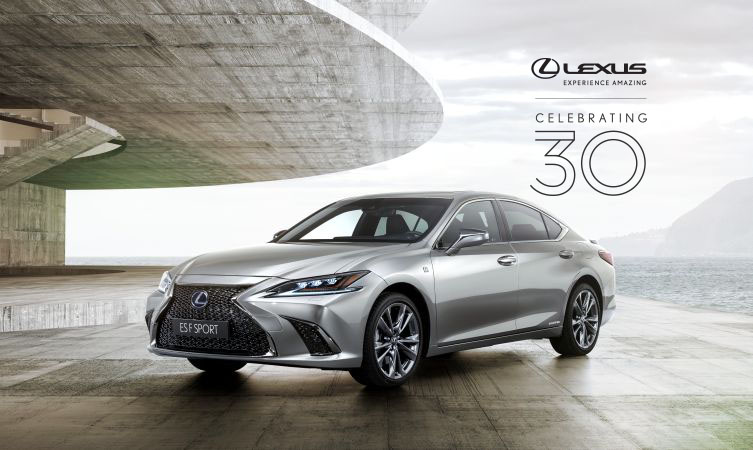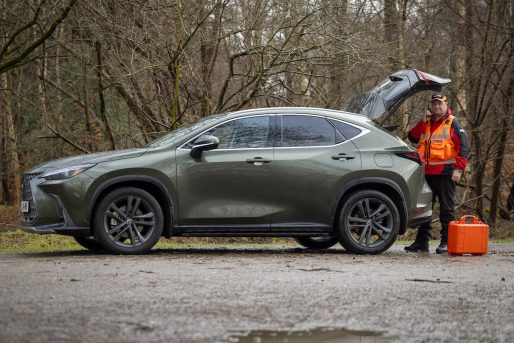When Lexus launched in the United States in September 1989, all eyes were focused on the LS 400 flagship. And rightly so. It was an incredible machine that redefined the luxury car market. But it is a lesser-known fact that Lexus actually offered a two-car launch line-up, including the ES 250 as an entry-level luxury saloon. The Lexus ES has been in constant production ever since, evolving through seven generations while always remaining true to its front-engine, front-wheel drive roots. This is our whistle-stop Lexus ES history tour of each generation.
Lexus ES history: first generation
Launched in the United States on 1 September 1989 alongside the flagship LS 400, the smaller Lexus ES 250 was designed for the luxury car buyer looking for a comfortable executive saloon with European character and nimble handling. Its close resemblance to the larger LS was intended to immediately generate a Lexus family look on its market debut.

Powered by a 2.5-litre V6 quad-cam 24v engine with 154bhp, the ES 250 was offered with either five-speed manual or four-speed automatic transmissions – the former for extracting the most performance, while the latter was marketed for its greater convenience and was, predictably, the most popular derivation. Nevertheless, the car was equipped with an agile chassis, consisting of independent struts all around, tied together with anti-roll bars front and rear. Disc brakes with ABS were installed on every corner behind attractive 15-inch alloy wheels.
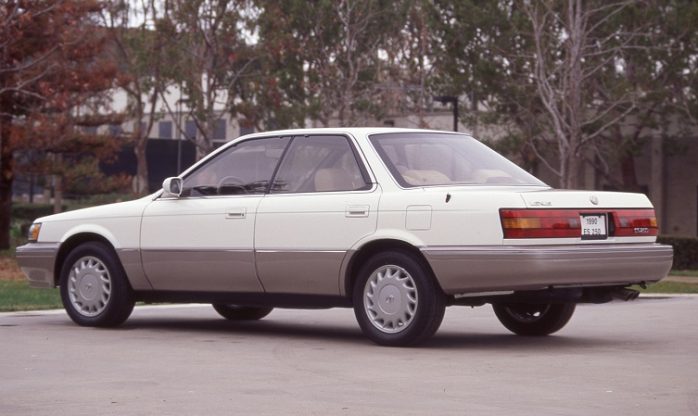
The ES 250 was generously equipped as standard. The maple-lined interior offered plenty of comfort and convenience features, including a premium, six-speaker sound system. Leather upholstery was frequently specified as one of the few available options, while further extras included a compact disc player, power-operated moon roof, electrically adjustable driver’s seat and all-season tyres.
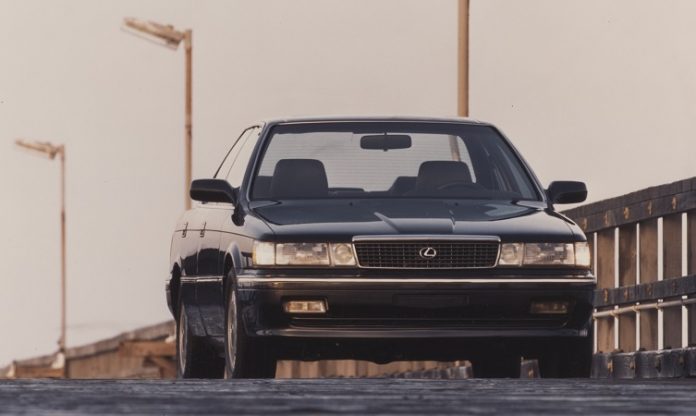
For finish quality and durability, corrosion-resistant steel was adopted for the exterior panels, with urethane bumpers and lower body side cladding to protect the metalwork from stone chips. Nevertheless, due to its relatively short two-year production run, the first-generation Lexus ES remains a rare sight on US roads.
Lexus ES history: second generation
When the all-new, second-generation Lexus ES arrived in US showrooms towards the end of 1991, the Lexus range had already expanded to include the sleek SC 400 coupe. Many of the standard features found in its more expensive siblings were therefore gifted to the new entry-level saloon, including striking electro-luminescent instruments, a remote entry system, and a tilt-adjustable steering column.
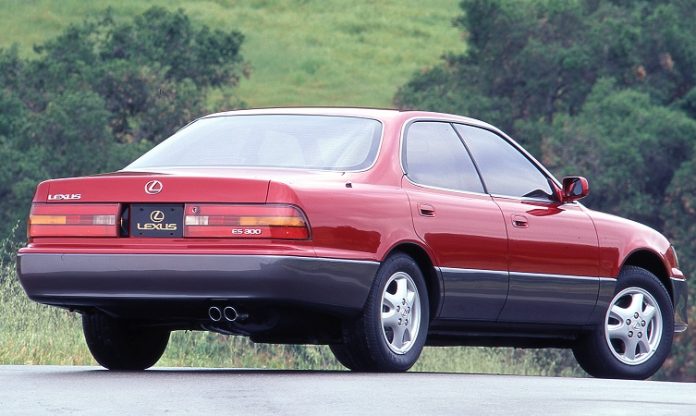
Again derived from the contemporary Toyota Camry, the model’s new ES 300 designation reflected the fact that the car had grown significantly in size. The VZ-series V6 engine had also increased in displacement to 3.0 litres, powering the saloon to 60mph in a brisk 8.0 seconds. Transmission options were once again either a five-speed manual or an optional four-speed automatic with two operational modes: Normal for emphasising economy and Power for performance.
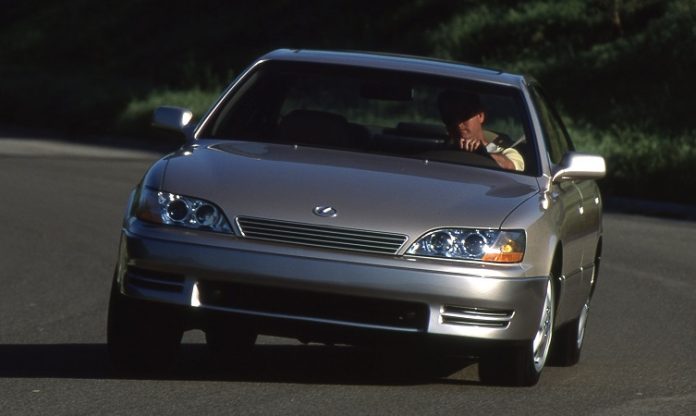
On the road, the new ES 300 more closely followed the Lexus tradition in delivering a noticeably smoother and isolating ride quality than before. Although the chassis had a similar fully independent MacPherson strut set-up, the front and rear subframes now sat on liquid-filled bushes to reduce the levels of noise, vibration and harshness being transmitted from the rolling stock.
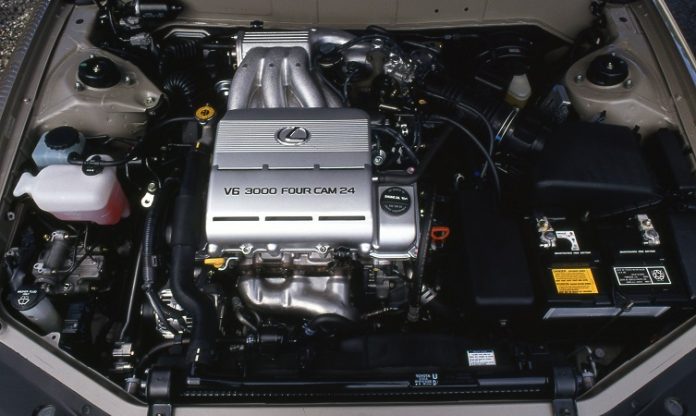
The second-generation Lexus ES swiftly became the brand’s best-selling model and the best-seller in the executive saloon sector. In order to help maintain that position, the model was revised in 1994 to include a lighter all-aluminium 3.0-litre V6 that met new emissions standards without sacrificing performance. This allowed the LS 400’s electronically controlled intelligent automatic transmission to be adapted for this application, while another important addition was dual front airbags.
Lexus ES history: third generation
Arriving as a totally redesigned model in the summer of 1996, the third-generation ES 300 wore similar but slightly sharper styling than the outgoing car. The passenger cabin appeared to extend further backwards to provide a sleeker silhouette, while the wheelbase and overall length had increased to provide legroom comparable with that of prestige European rivals from the class above.
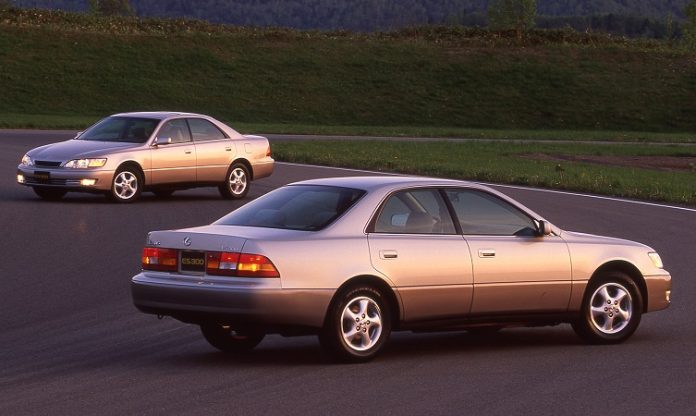
This was evidence of a concerted, developmental emphasis on interior design and in providing a comfortable and welcoming environment for drivers and passengers.
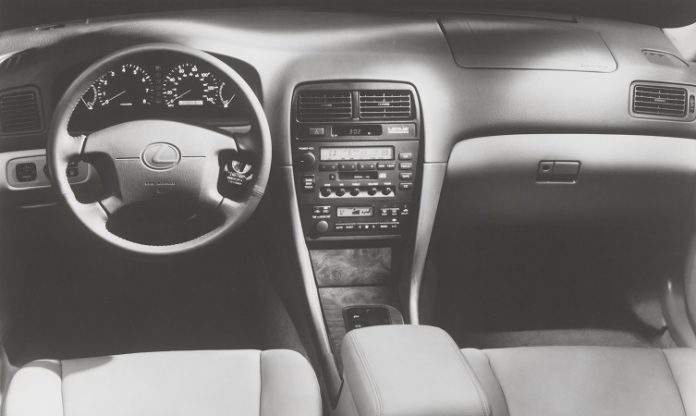
Genuine wood trim on all four doors, a power-adjustable driver’s seat with memory function, and a two-level centre console with a 12v power outlet were new features. Echoes of the LS 400 could be seen in the leather upholstery and electroluminescent Optitron instrumentation that were now specified. Meanwhile, an in-dash, six-disc CD changer (see below) was available as an option, which was a first for the class. As a result of its generous equipment level, the new ES 300 surpassed the specifications of many competitors’ flagship models.

The sole powertrain offered in the new ES 300 was the same 3.0-litre V6 installed in the second-generation car. Developed using the same design philosophy as the venerable Lexus V8, only in three-quarter size, this all-alloy engine offered enthusiastic high-rev performance yet quiet and refined operation at lower revs thanks to a special two-way exhaust control system. It also felt livelier in this application thanks to the new car’s lighter kerb weight and therefore higher power-to-weight ratio.
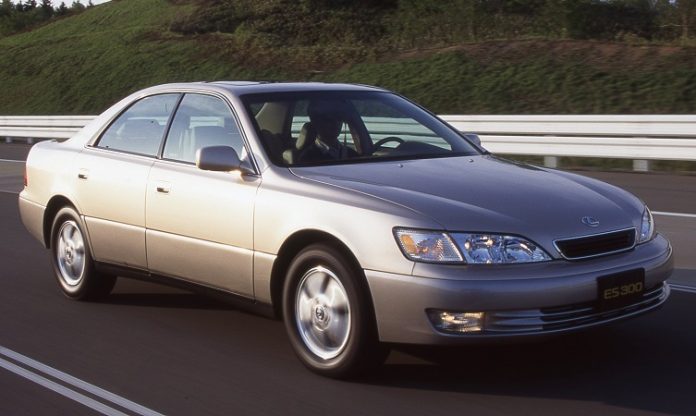
Chassis improvements included revised geometry and a new steering gear design for greater feel and precision, while an Adaptive Variable Suspension was available as an option. Unique within the near-luxury segment, the system was based on that of the LS 400 and could adjust each shock absorber within 0.0025 seconds across a possible range of 16 settings to improve ride, handling and stability. This advancement negated the need to offer ‘sport’ or ‘touring’ settings within the suspension system.
Safety features were high on the new car’s agenda and included head impact protection, a three-point centre rear seat belt, pre-tensioners for the front seat belts, and optional electronic traction control. On its launch, it exceeded all contemporary and future crash standards.
Lexus ES history: fourth generation
Lexus introduced the fourth-generation ES 300 in the summer of 2001 as a 2002 model. Interestingly, the recent introduction of the IS as the brand’s entry-level and most sport-oriented model allowed Lexus to refocus the ES as a more comfortable, luxurious saloon. In personality, it now became more closely aligned with the LS 430 flagship.
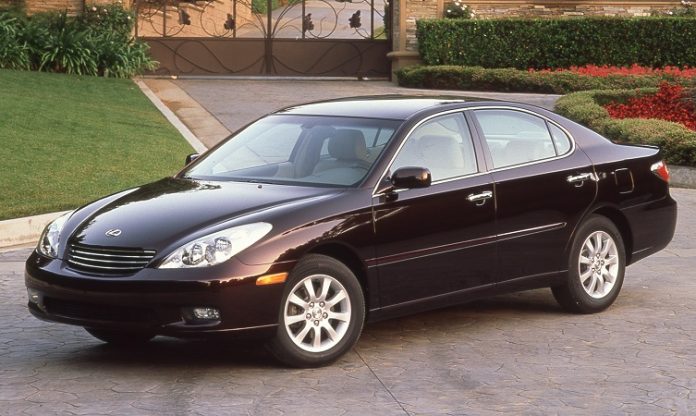
Conversely, powertrain and chassis refinements were also claimed to make the new ES 300 more engaging to drive. For example, its four-wheel independent suspension was mounted on anti-vibration subframes, now with greater rigidity for tighter handling. Further enhancing this driver engagement was the optional Adaptive Variable Suspension system, which remained a high-end, adjustable damping technology rarely seen in the entry-luxury segment. The standard 16-inch alloy wheels with 215/60 tyres were larger than those of the outgoing generation, as were the front discs, this time with dual-piston callipers.
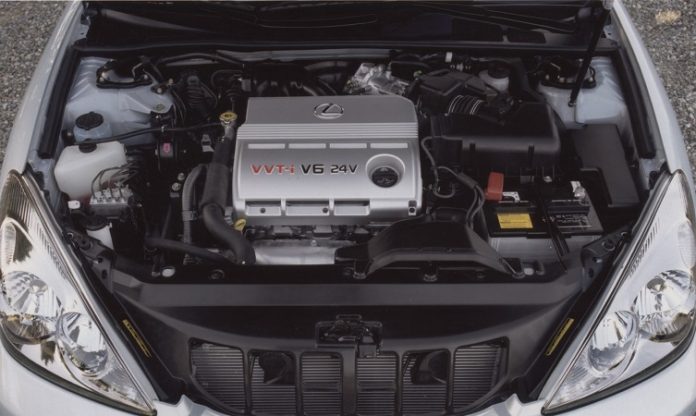
Powering the new ES was the same venerable 1MZ-FE 3.0-litre DOHC V6 applied since the second-generation model – tuned to produce 210hp at 5,800rpm and 220 lb/ft torque at 4,400rpm. This time, however, it was teamed with a new five-speed automatic transmission which improved the saloon’s overall performance, smoothness and fuel efficiency.
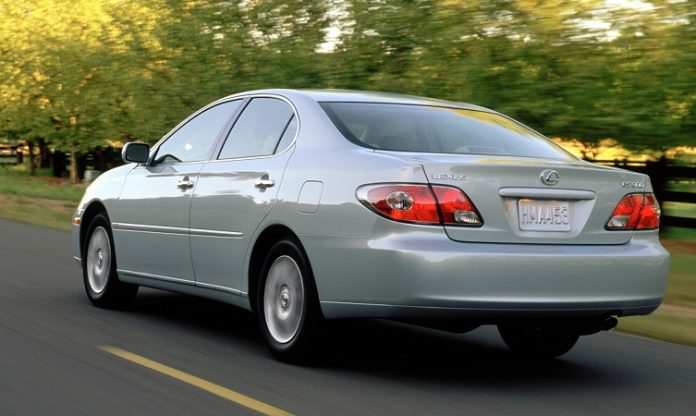
The new, more flowing design of the new ES 300 also exuded luxury, expressed in the sculptured body lines and the dynamic surface tension these created. The gaps between panels were narrowed to highlight the vehicle’s precise build quality, while new combination headlights simplified the look of the front end. A flat under-body, reshaped door mirrors and other aerodynamic refinements enabled it to scythe through the air more cleanly, and a longer wheelbase and increased height gave passengers greater room.
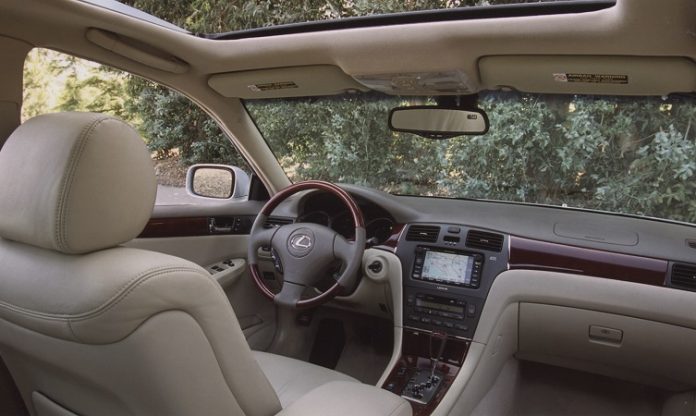
The application of new sound absorption – rather than sound insulation – technology together with active engine mounts and two-stage exhaust silencing made the cabin a quieter place in which to travel. It offered greater safety, too, thanks to new crush zones and passenger compartment reinforcements built into the monocoque. Examples of this included A-pillars that extended further into the roof and double-thickness B-pillars linked to substantial cross-car reinforcements for greater side impact strength.
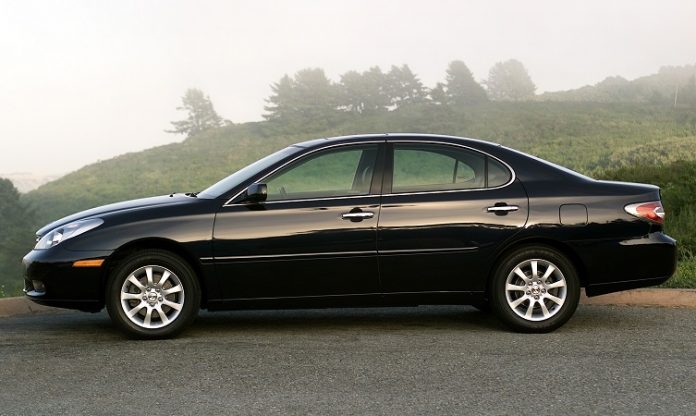
Further raising of the safety quotient came in the form of new side curtain airbags to augment the dual front airbags and front seat-mounted side airbags. The seats themselves were now designed to lessen whiplash injuries. Active safety features included anti-lock brakes with electronic brake force distribution, and an optional Vehicle Skid Control system that integrated the traction and braking systems to control the vehicle on slippery or low-grip surfaces.
For the 2004 model year, Lexus upgraded the engine to a more powerful 3.3-litre MZ-series V6 offering 225hp. Now called the ES 330 (see below), the revised car could accelerate to 60mph nearly a second faster than before, while subtle ratio changes within the five-speed automatic transmission meant fuel economy was not substantially different. Additional features included standard leather seats with memory function, as well as larger side impact airbags and enhanced optional satellite navigation.
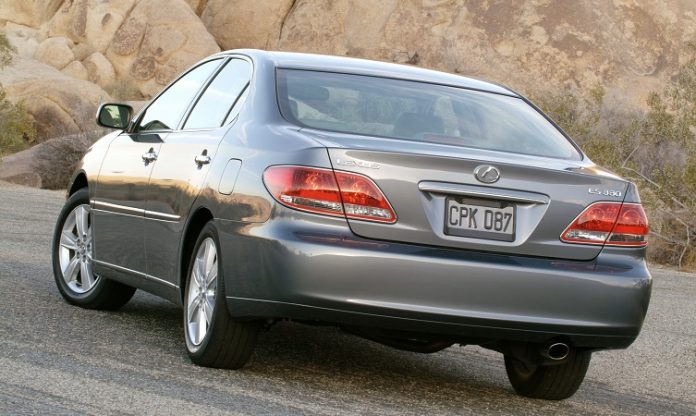
A final and very subtle further revision for this generation was applied for the 2005 model year, identified from the front by a new grille with horizontal bars, reshaped lower valance with round fog lamps, and new projector bulb headlights. Meanwhile, at the rear, the tail lamps now featured twin circular bulb elements. Four new exterior colours were also added to the palette.
Lexus ES history: fifth generation
Lexus staged the world premiere of the all-new fifth-generation ES at the Chicago Auto Show in February 2006. The new ES was more sculptured to behold like it had taken on a new fitness regime, while the qualities of comfort, safety, performance and craftsmanship were substantially improved. In fact, in every tangible metric, the new ES was said to be better than the original LS.
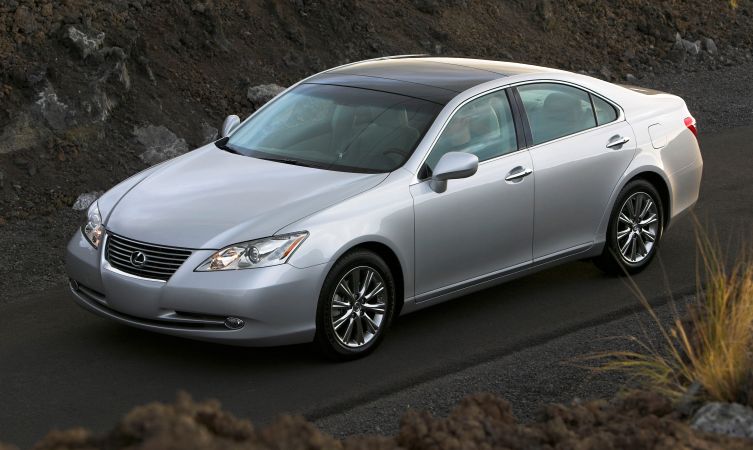
The adoption of L-finesse design language (ES was the fourth Lexus saloon to receive this aesthetic) was seen in the long bonnet, pulled-back cabin, tapered C-pillar and relatively short boot lid. Its silhouette was more sports car than a saloon, which gave it extra charisma yet simultaneously forged a closer family resemblance across the entire Lexus line-up. A longer wheelbase and track gave the new ES a more confident stance, while these same alterations increased space in the passenger compartment without altering the overall length.

Reinforcing its athletic looks was extra muscle under the bonnet. The new ES 350 was equipped with a sophisticated 3.5-litre V6 offering greater power – now 272hp and a 0-60mph time of 6.8 seconds – allied to best-in-class fuel economy. A couple of years later, the fifth-generation range was expanded to include the ES 240, which, in line with Lexus’s straightforward naming strategy, was powered by a 2.4-litre engine. This was the first time in the model’s history that a four-cylinder engine was installed… but it definitely wouldn’t be the last either.
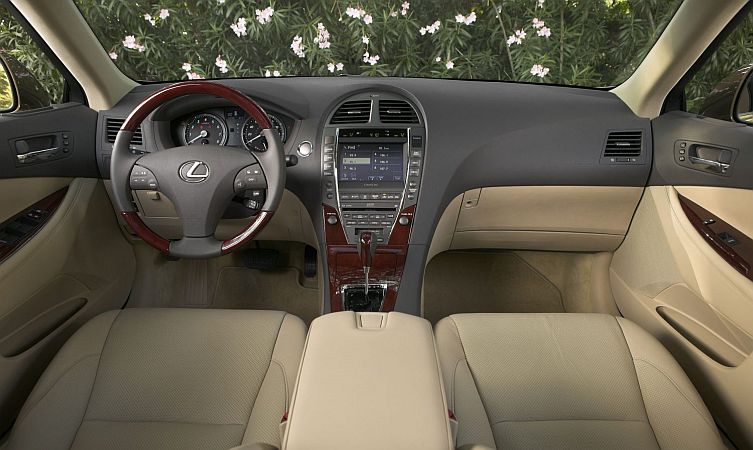
The new 3.5-litre V6 was mated to an intelligent, six-speed automatic transmission. Low in friction and high in efficiency, it was lighter and more compact than the outgoing five-speed set-up and had 20% fewer moving parts and 24% fewer hydraulic controls.
Greater intelligence was also seen in the application of complex technologies. Features now included keyless entry and push-start ignition systems, dual-zone automatic climate control, ten-way power-adjustable front seats, voice control for the navigation and, in a first for Lexus, an optional panoramic roof that extended over the entire passenger cabin.
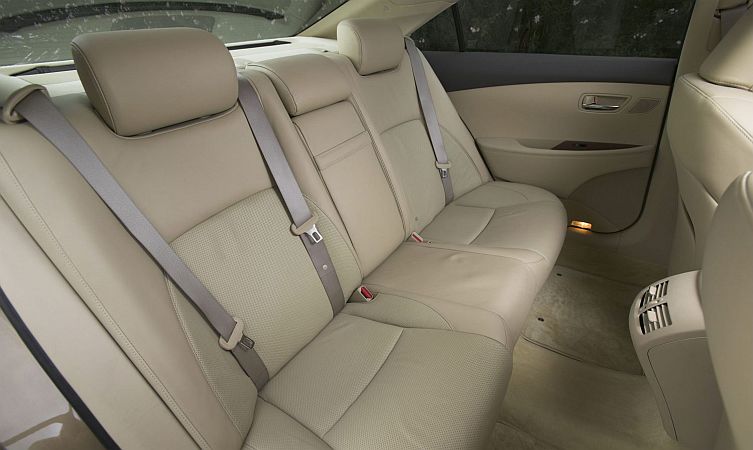
Adding a tantalising new element to the equipment was a next-generation, 300W and 14-speaker Mark Levinson premium sound system offering a full 5.1 Dolby Digital home theatre entertainment experience optimised for music playback. On an aesthetic level, premium wood and leather accents were more generously applied throughout the interior, with all touchpoints designed to convey a greater sense of quality and refinement.
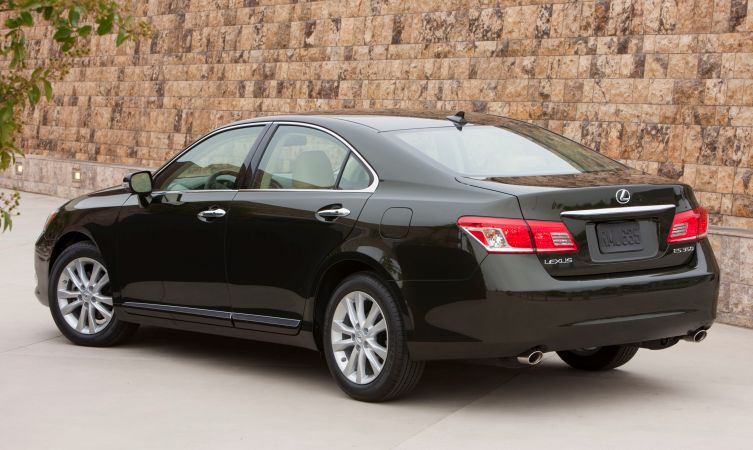
A mid-life facelift was applied to the fifth-generation ES for the 2010 model year (see the above image). It included subtle tweaks to the front fascia and rear lenses to align it with newly released saloon models such as the Lexus HS, new console and trim options, rear seat-mounted side airbags (bringing the total to ten airbags) and an all-new telematics system.
Lexus ES history: sixth generation
Ever since its arrival in 1989, the ES had been a sales leader for Lexus. But with the launch of the sixth-generation model in 2012 and its new status as an important global vehicle for Lexus, it was given the opportunity to lead the company forward with the availability of Lexus Hybrid Drive.
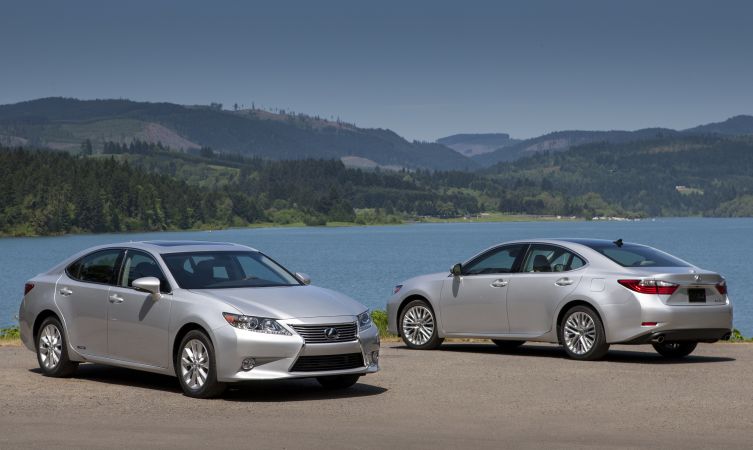
The new ES 300h (see image below) provided knock-out headlines, with a 2.5-litre hybrid drivetrain that offered fewer emissions than the contemporary Chevy Volt plug-in hybrid and 25% greater economy than a Honda Jazz supermini. Of course, the model’s more traditional audience would have been pleased to see the familiar 3.5-litre V6 with its six-speed, intelligent automatic transmission return, while during the course of its six-year production run, new 2.0-litre and 2.5-litre four-cylinder powerplants also became available, depending on the market.
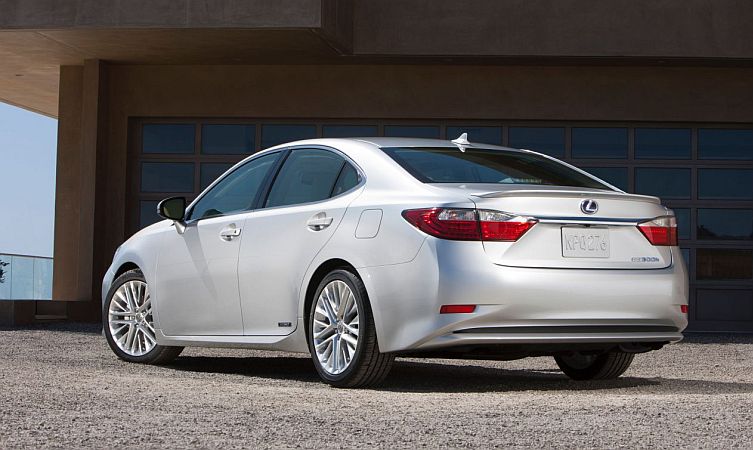
In design, the new ES featured a low and progressive profile with clean, continuous lines from front to rear. The proportions were made even more distinctive by pulling all four corners tightly inward to the wheel arches, while the addition of the iconic spindle grille and L-shaped front and rear light signatures gave the new model the unmistakable appearance of a new-age Lexus. The wheelbase itself was lengthened by almost two inches, while the car was slightly longer than before to create a more spacious interior.
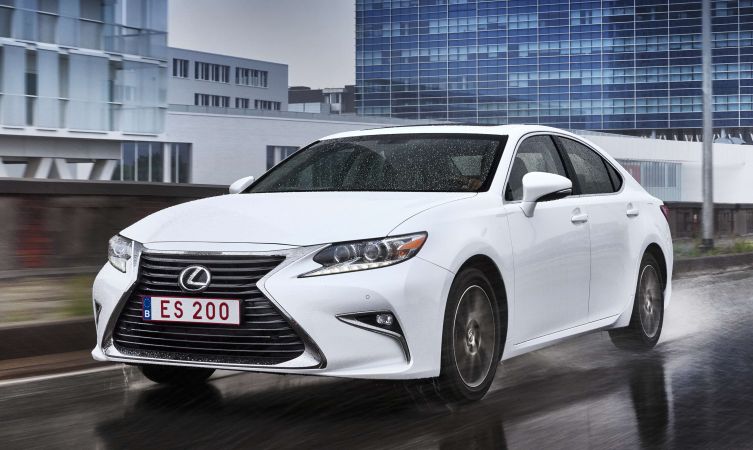
In addition to wearing blue-tinged badges, hybrid models could be visually distinguished by an exclusive rear bumper design with a hidden exhaust outlet, unique alloy wheels, a standard rear spoiler to improve aerodynamics, and distinctive bamboo interior trim.
As standard, the new ES ran on 17-inch alloy wheels, though these could now be upgraded to 18s for the first time in the model’s history. Extra chassis bracing and spot welds helped to increase body stiffness for more precise handling. However, despite all the aforementioned increases, extensive use of lightweight, high-tensile steel meant the car was 40kg lighter than the outgoing model.
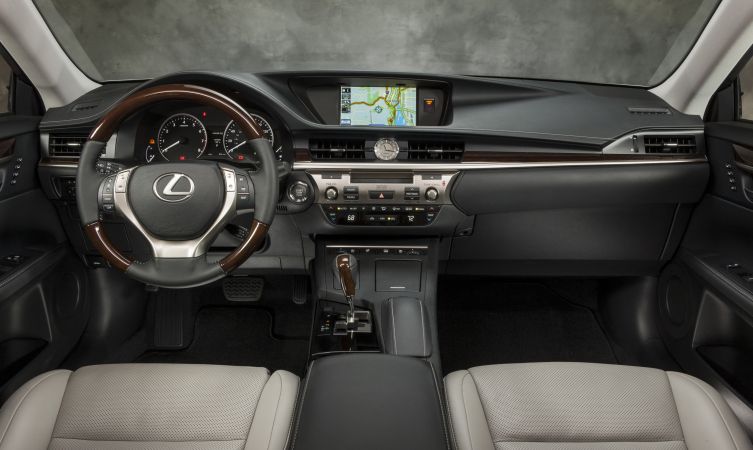
The new interior was designed to provide a sense of space and security. Sightlines and visibility were improved, with all controls and cabin materials chosen to display a high level of quality and craftsmanship. Separate display and operation zones were created to help keep the driver’s eyes on the road, while the inclusion of second-generation Remote Touch Interface technology was designed to further reduce distractions when operating the numerous control systems.
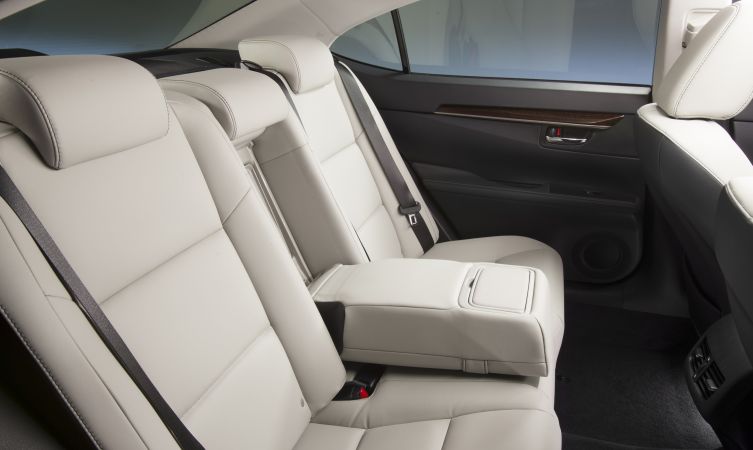
Greater rear seat legroom was a hallmark of the redesigned cabin, while further comfort and convenience features included door and rear window shades, a power-operated boot lid, ambient lighting and special seating material chosen for its reduced environmental impact.
In October 2015, after more than 1.2 million sales of the ES in the United States, Lexus began production of the revised, 2016 model year ES (see image below) for the huge North American market on a new, dedicated line at the company’s plant in Georgetown, Kentucky. However, production of the ES hybrid model for all global markets remained at the Kyushu plant in Japan.

At the same time, reports were surfacing of the future arrival of the seventh-generation model. By then it was calculated that more than 1.7 million ES models had been sold throughout the globe since its launch in 1989. But by early 2019 and the availability of the new ES throughout Europe, that cumulative figure had accelerated to more than 2.3 million sales.
Lexus ES history: seventh generation
On sale in the UK since the start of 2019, the current, all-hybrid seventh-generation model ushered in a new era for the ES. It replaced the GS saloon in the UK line-up and followed the flagship LS saloon and LC coupe in carrying forward a new chapter in Lexus design, one that builds on the model’s established strengths but allied to a much stronger emotional quality.
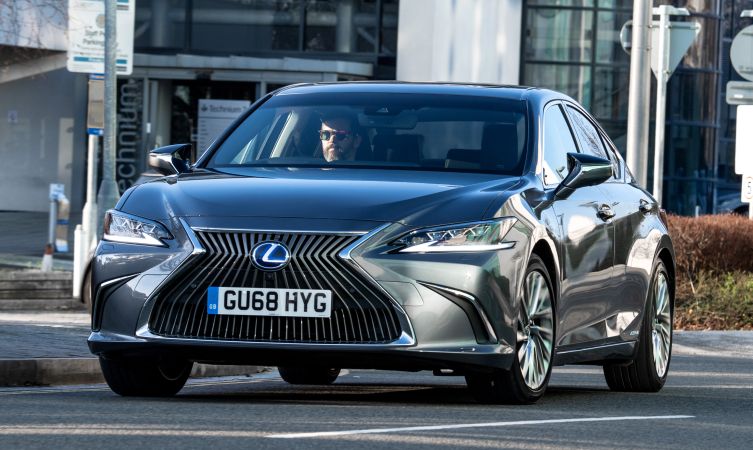
Traditional buyers will find the ES 300h more spacious, quieter and safer than ever before, while a new generation of customers will find a saloon with sharp performance, class-leading safety technology and a level of craftsmanship rarely found in this market segment.
In April 2023 and after 33 years, the ES saloon passed the milestone of three million accumulated sales across the globe. It currently ranks as the second best-selling Lexus of all time, behind the RX luxury SUV which has so far amassed 3.6 million sales.
Further details of the seventh-generation ES range and a comprehensive configurator function can be found on the Lexus UK website.
All information is correct at the time of publishing.
